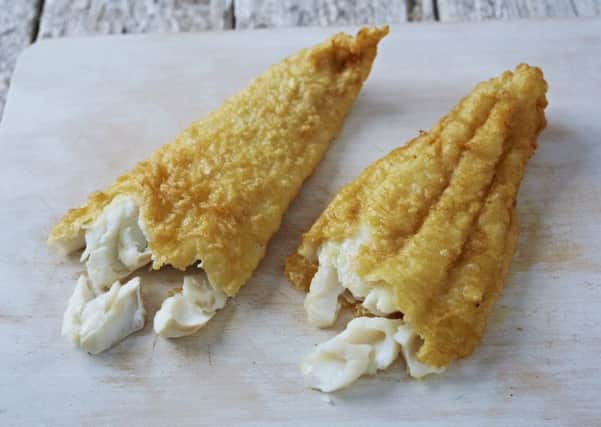Odd fish: Could you tell if you're getting genuine cod with your chips?


Testing for the Marine Stewardship Council, which certifies sustainable catches, reveals that fish are mislabelled in eight per cent of chip shops that have not signed up to its “blue tick” scheme.
Among the region’s hundreds of fish cafes and takeaways, only around 15 are believed to be members.
Advertisement
Hide AdAdvertisement
Hide AdThe MSC says mislabelling occurs in just 1.6 per cent of shops with its certificate, compared to eight per cent in other outlets.
DNA testing was carried out on samples of battered fish from 122 shops, half of which were MSC certified.
Just one sample from a certified shop was found to be haddock instead of cod, but five of the nearby non-certified outlets served fish that was different from the species advertised, with one frying cheaper whiting portions instead of cod.
However, the figures are much lower than those released in 2014, when a survey of fish shops by the consumer organisation Which? found that 16 per cent of fillets were mislabelled.
Advertisement
Hide AdAdvertisement
Hide AdBritish fish and chip shops are also doing significantly better than the international rate of seafood mislabelling, which stands at 30 per cent.
The MSC scheme uses DNA testing to guarantee that fish has been caught from a sustainably-managed fishery and belongs to the species its seller claims.
The organisation said that mistakes could be attributed in some cases to the length of the supply chain.
A spokesman said: “We like to think that fish goes straight from the dock to the shop, but actually the chains can be five or six people long.
Advertisement
Hide AdAdvertisement
Hide Ad“Fish goes to a market, gets processed somewhere and then goes to a supplier. Sometimes it gets done outside the UK.
“It only takes one mistake or act of deception and this is what happens. The shops themselves are suffering because they think they’re buying the right fish.”
George Clark, a commercial manager at the MSC, said: “The DNA results are clear - your Friday night takeaway is far more likely to be the fish you think you’ve bought if it’s MSC labelled.
“It will also be sustainable, responsibly caught and fully traceable.”
Advertisement
Hide AdAdvertisement
Hide AdChip shops, most of which are small, family-run businesses, must pay a fee to the MSC to receive its blue tick label, although the organisation says it does not profit from the scheme.
Its spokesman said: “It’s a lot of work to do traceability on your fish. You need to be a really organised chippy to do it.”
Among the Yorkshire chip shops to have signed up are five in Whitby and Robin Hood’s Bay, four in Bridlington, Hornsea and Hull, three around York and Selby, and two in West Yorkshire.
Professor Chris Elliott, founder of the Institute of Global Food Security at Queen’s University in Belfast, which collaborated with Which? on the 2014 survey, said: “It’s reassuring that the level of fish mislabelling in the UK is much lower than other reported regions in the world.
Advertisement
Hide AdAdvertisement
Hide Ad“However, the fact that the certified shops performed so much better is a clear indication of the importance of the programme.
“Not only does it help assure customers of the sustainability of their fish but also that they are getting what they’ve paid for.”